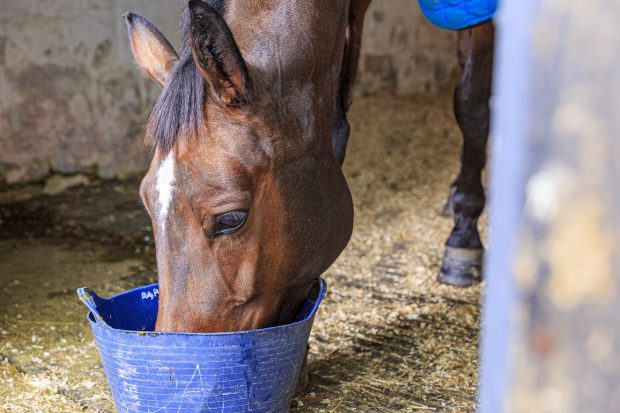A feed merchant’s warehouse represents a maze for the uninitiated, but riders are now far more educated about both their own and their horses’ dietary requirements.
“Nowadays, it’s possible to buy the most scientifically-formulated feed, but if you are unaware of the rules of good feeding, its benefits will be lost,” says Ruth Bishop, chief nutritionist at Spillers.
“Riders tend to overestimate how much energy is used up in exercise and, as a general rule, most horses do well on low- to medium-energy feeds. High-energy feeds are for specialist use and feeding racehorse cubes will not help your pony jump higher.”
It should also be remembered that horses are “trickle” feeders. A stabled competition horse should receive hard food five or six times a day.
However, this does not apply to a general riding horse or pony at grass, which may not need any hard feed at all.
How much?
“In general, people can’t bear to have an animal and not feed it breakfast and supper,” says equine nutritionist Dr Derek Cuddeford.”Owners forget at their peril that about two-thirds of a horse’s digestive tract only digests fibre.
Horses fed plenty of grass and hay will never be short of fibre, but if you increase their workload and reduce the forage part of the diet, you must add some good-quality fibre in the hard feed.
“The quality of feed is important and you usually get what you pay for. The best companies list their ingredients separately on the back of the bag. Their nutritionists have produced a diet to a fixed formula that they know will work.
“Some companies attach a label to the bag which allows them to alter specific foodstuffs.”
Always check whether ingredients are listed by type or grouping. The words “cereal” and “cereal by-products” mean little and allow the company to change the individual ingredients within that grouping.
Buyers should check that the bag confirms that the product is free from prohibited substances all the way up the feed chain, as this is also an indication of the quality of the ingredients.
“The cost of feed should never be a consideration,” says Dr Cuddeford. “Horses are extremely astute with their sense of smell and taste and there is also an element of mouth feel.
“The first thing owners need to do is buy something that their horse is going to eat. If he enjoys it and looks well on it, then there is likely to be a strong element of brand loyalty.
“The horse is dependent on your good judgement. Owners should buy from a company which gears its product specifically to horses, rather than one which may be run by accountants and is constantly striving for the bottom line in economic terms.”
All compound feeds contain a mineral and vitamin pre-mix, which comes in a pellet or similar form, and it is this element of the feed, according to nutritionist Deborah Lucas, that is the most important.”Minerals and vitamins have a great impact on the horse’s overall health as they are essential to the biological processes.”
Food companies are required by law to declare their protein, energy and fibre or ash levels. together with their inclusion of vitamins A, D and E.
Energy is the most important nutrient. It is measured in megajoules (MJ) and ranges from about 6MJ per kilo in straw to more than 15MJ per kilo in racing feeds and 30MJ in oil.
Forages havelow energy contents, but, with compound feeds, try to make sure the energy is derived from quality fibre, which follows the natural mechanisms of the digestive system and also controls the starch supply.
Vegetable oils are another method ofproviding energy from non-starch sources. They also help to promote a shiny coat and good skin, as well as increase stamina.
Protein levels should also be derived from a quality source and should include a body-building nutrient.



